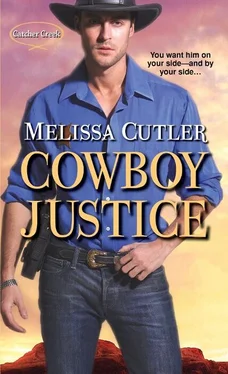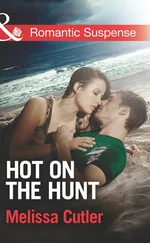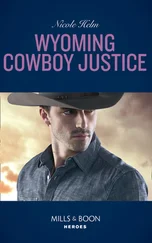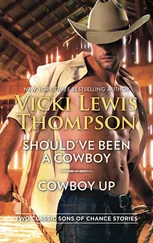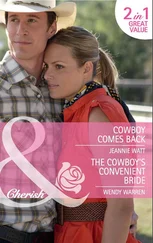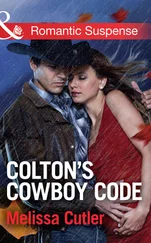She walked Growly out of the stable yard, her thoughts drifting to the day the horseshoe was given to her. The day she’d come to consider the most liberating day of her life.
She’d been ten years old.
Her memory began in the bakery section of John Justin’s Grocery Store on Main Street during one of her mom’s most intense bipolar meltdowns. Back then, Rachel had never heard of the word bipolar, though she lived in a house held hostage by the illness.
Rachel and her sisters’ reactions to their mom’s depression were as different as their personalities. Rachel’s anxiety was paralyzing. She clearly remembered, during Mom’s outbursts, not being able to breathe or make her legs work. Standing there—frozen, her eyes riveted to the scene—her body became a sponge, absorbing the pain of everyone around her, along with the fear. She took it all in and made it her own.
Amy, almost four years younger than Rachel, took Mom’s episodes as a personal affront. Maybe because she looked the most like Mom, or maybe because she’d been born with her heart on her sleeve, but for reasons Rachel didn’t understand—and probably Amy didn’t either—she’d exacerbate the situation, picking fights, goading Mom on. Having her own parallel meltdown.
Jenna, nine years Rachel’s junior, seemed oblivious, like she’d been born with skin too resilient for their volatile home life to penetrate. When Mom would start into an episode, she’d wander off to play. For the longest time, Rachel thought Jenna would be the one to emerge into adulthood undamaged. Then Jenna turned thirteen and she turned wild—partying, drinking, running off for days at a time until a deputy, Vaughn most always, dragged her home kicking and screaming.
Rachel couldn’t remember what Mom’s trigger had been the day of her meltdown at John Justin’s, or if there even was one, but she remembered Mom throwing loaves of bread at the store’s baker, shouting obscenities. Then six-year-old Amy started clearing loaves of bread off the shelves while screaming at the top of her lungs. Jenna, one at the time, popped Cheerios in her mouth from the stroller tray and watched.
In the midst of the anarchy, Rachel, paralyzed and fighting the churning pain of her tummy, felt her fear dissolve for the first time ever. The scene before her narrowed until it seemed as if she were watching it on a small television at the opposite end of a long hallway. Then her legs unfroze.
She took a step back. Then another. Exhilarated by her newfound freedom of movement, she turned her back on her mom and sisters. And she walked away. Stepping through the sliding glass doors of John Justin’s into the quiet, sunlit street was a feeling that would stay with her forever.
It was her moment of liberation.
Their farm was too far away for her to walk home, so she’d gone to the feed store. The Parrish family who owned it had always been kind to Rachel when she’d shopped there with her dad. They passed her sweets and told her jokes. That day, she walked into the feed store, and Mr. Parrish believed her lie that her mom had driven off and forgotten her, probably because everybody in Catcher Creek knew what Bethany Sorentino was like. Mr. Parrish gave her a peppermint and a horseshoe that had been laying on the counter, explaining that it would bring her luck. Then he drove her home, where, horseshoe in hand, she set off on foot over the fields and pastures until she was hopelessly lost.
Hours later, her father, on his horse, found her sitting against a boulder. He sat with her for a long time, and when she asked if she could start working the farm with him in the mornings and after school, he hugged her and told her, Of course you can, Jelly Bean.
She missed her dad so much. Not the part of him who gambled and schemed their bank accounts dry, but the man who’d taught her to be a farmer. The man who found her when she was lost. This was her second spring without him, and though the loss wasn’t nearly as acute as it had been a year earlier, her grief remained, tempered only by the anger and embarrassment she felt at how blind she’d been to his faults.
A mile into the ride, when she sensed Growly had warmed up enough to handle some speed, she nudged his flanks. They took off over the landscape, both woman and horse needing the exertion of a long, hard run to ease the burden of their grief.
* * *
From his vantage point at the top of the mesa, Vaughn looked at the gash in the dirt running along the twenty-foot drop of the mesa’s face. The path Wallace Meyer Jr. took on his way to the valley. Stratis was on the scene with him, and the two had worked all morning to reconstruct a timeline of events from the previous day.
They’d begun in the canyon and followed the path of footprints around the south side of the mesa, where the slope was gentle enough to drive a truck up or walk. The footprints turned to scuffs once they reached the top of the slope, the marks of someone scooting on their knees. The scuff marks ended next to the imprint of a truck tire where, it seemed, Rachel stood and fired at the men. On the ground, scattered near the footprints, were six .38 bullet casings.
Not a good find. Not at all.
Which was why Vaughn was standing on the edge of the mesa, watching a hawk circle in the distance while he overcame his urge to kick something.
His interview with Wallace Jr. yesterday had lasted hours and yielded nothing except a grudging admittance—a demonstration of cooperation, his lawyer proclaimed—of the identity of the fourth man at the scene, the suspect currently at large with Elias Baltierra. Shawn Henigin. Henigin had a history of petty thievery and drug charges from Tucumcari to Santa Fe, the most recent arrest being a year earlier for possession of a stolen car. The charge hadn’t stuck, as the car owner had a sudden change of heart and decided he’d allowed Henigin to borrow it.
Kirby and Molina were equally unsuccessful tracking down Henigin and Baltierra. At the county line to the south, they found a truck matching the one in Rachel’s photographs as far as they could tell. Hard to determine exactly, given that it’d been torched to a crumbling shell. Four AR-15 rifles, also torched, were discovered in the backseat. That accounted for all the rifles in Rachel’s crime scene photographs, but it certainly didn’t mean Vaughn was going to amend the statewide APB out on the two suspects identifying them as armed and dangerous.
The state’s forensic lab towed the truck to their facility in Albuquerque to process it, but Vaughn didn’t have any high hopes they’d find a single trace of evidence in the wreckage.
Neither was Vaughn holding his breath in anticipation of Henigin and Baltierra’s capture. Too often in border states like New Mexico, suspects found a way to skip out of the country, perhaps with the aid of one of the many illegal immigrant smugglers who haunted border cities in both countries and knew all the tricks to sneaking across the border undetected.
Stratis sidled up next to him after a few minutes. Despite the shade created by the brim of his brown hat, he squinted as he took stock of the valley, his angular features set in a hard mask, his arms crossed over his chest.
Stratis was an indispensible member of Vaughn’s department, and with only a couple years separating their ages, everything on paper said the two of them should’ve been fast friends. Both were Quay County natives who’d worked for various law-enforcement entities for a similar number of years, and both were known for their unwavering commitment to professionalism and taking a hard line stance against police corruption, which were two of the main reasons Vaughn had promoted him to undersheriff after his election.
Hell, Stratis would’ve made a top-notch sheriff if he hadn’t had such a strong aversion to public attention. But, for whatever reason, their personalities had never quite meshed. They worked well together, but couldn’t seem to have a real conversation about anything other than a case. Not that Vaughn was looking for more friends—he had plenty—but it would’ve been nice to feel like he knew more about the man than his arrest record.
Читать дальше
